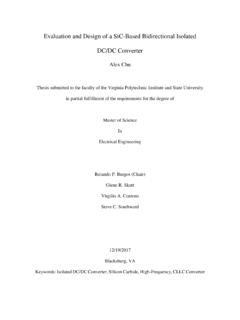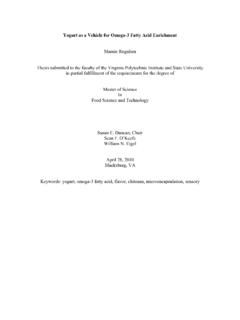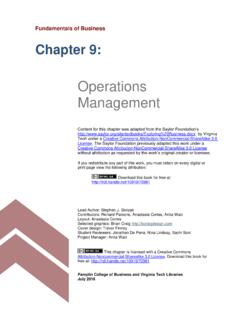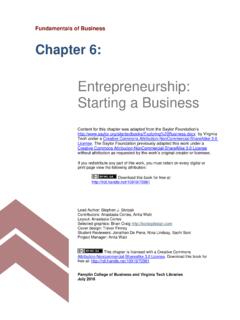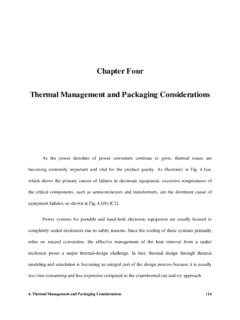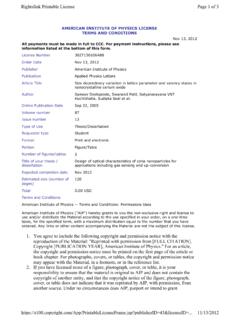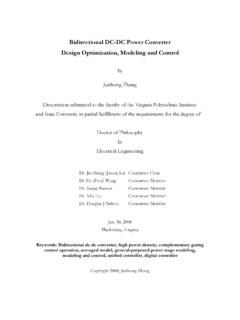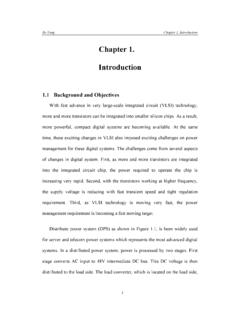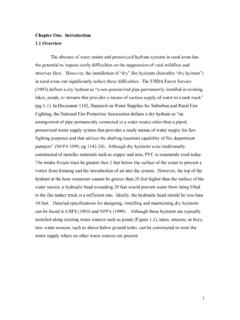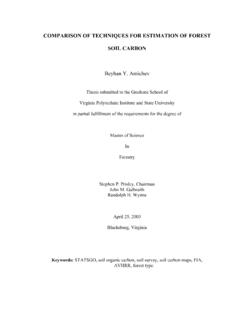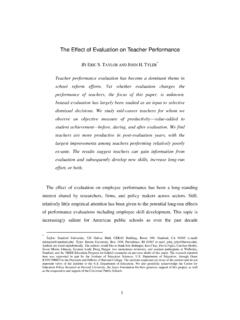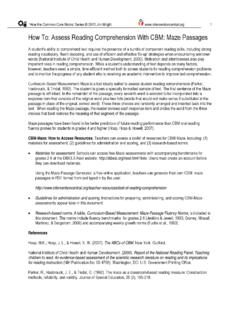Transcription of CHAPTER II REVIEW OF RELATED LITERATURE groups.
1 17 CHAPTER II REVIEW OF RELATED LITERATURE As the teacher-researcher and the classroom teacher, of great importance was the connection between my case study and the RELATED LITERATURE . My search of the RELATED LITERATURE highlighted three groups of individuals: (a) the teacher with his or her roles in the classroom, (b) the students and their roles as learners, and (c) the community of scholars who conducted research on learning contracts. In this CHAPTER , I connect my case study with each of the three groups. The Teacher s Roles in the Learning Process The classroom teacher has a variety of roles and responsibilities that change according to the students he or she instructs.
2 Teaching the life science curriculum encompasses a broad spectrum of choices with respect to delivery strategies and hands-on activities that enhance instruction. In this next section, the teacher s roles include individualizing and differentiating instruction, selecting age-appropriate teaching strategies, and acting as the facilitator of learning. Individualized Instruction According to Dunn and Dunn (1972), a student contract should be a part of every dynamic educational program, and as a powerful teaching tool it should stimulate individualized learning (p. 31). They also stated that individualized instruction is the one-on-one relationship between a student and what he learns (Dunn & Dunn, 1975, p.)
3 5). One of my reasons for selecting the Dunn and Dunn model for the learning contract used in my case study was their idea of individualized instruction. This instructional tool gave the students more opportunities to be actively involved in the educational process, and it enabled the teacher to offer a variety of learning opportunities for the mixed -ability students. The learning opportunities changed with the types of assignments, the availability of resources for hands-on activities, enrichment activities, and REVIEW activities for reinforcing curriculum concepts. Differentiating Instruction The challenge for the middle school teacher is to differentiate or to adapt instruction to respond to the diverse student needs found in inclusive, mixed -ability classrooms (Tomlinson, 1995c).
4 A differentiated classroom offers a variety of learning options designed to tap into different readiness levels, interests, and learning profiles. According to Tomlinson (1995c), 18 Teachers utilize (a) a variety of ways for students to explore curriculum content, (b) a variety of sense-making activities or processes through which students can come to understand and own information and ideas, and (c) a variety of options through which students can demonstrate or exhibit what they have learned (p. 1). After I read the different articles by Dr.
5 Carol Tomlinson, I went back to the lessons that had already occurred to check and see if I had utilized variety in my daily instruction. As the classroom teacher, I did use several different instructional strategies in the learning contract to promote learning and an understanding of the material being taught in the seventh-grade life science classroom. I introduced and reinforced curricular content using a computer with CD-ROM, filmstrips, laser disc, and videos. Sense-making activities included hands-on activities, lab exercises, Power Point exercises in the computer lab, and group projects, for example building a cell using candy as inclusion bodies or organelles.
6 Students had a variety of options to demonstrate what they had learned through class discussions, tests, lab exercises, projects, and additional activities. Because of the mixed -ability students in my classroom and their need to understand the science concepts being taught, differentiating instruction became important to me. The teacher uses four strategies to shape teaching and learning in an effective, differentiated classroom (Tomlinson, 1995a): (1) Instruction is concept focused and principle driven. All students come to understand the key principles. Such instruction enables struggling learners to grasp and use powerful ideas and at the same time, encourages advanced learners to expand their understanding and application of the key concepts and principles.
7 This type of instruction stresses understanding rather than retention of fragmented bits of information. (2) On-going assessment of student readiness and growth are built into the curriculum. Teachers do not assume that all students need the same segment of study, but continuously assess student interest and provide assistance when needed. (3) Flexible grouping is consistently used. It encourages students to work in many patterns, whether in-groups or individually, or as one large group. (4) Students are active explorers, and teachers guide the exploration. (p. 1) In the differentiated classroom the teacher works as a guide or facilitator of learning.
8 Students learn to be responsible for their work and develop ownership of their learning (p. 1). The students learning contract is one of many strategies that offers the foundation necessary for the learners to assume the responsibility for their individual learning journey. 19 The learning contract used for my case study contained activities that promoted flexible grouping for daily seating and lab activities. Students participated in self-evaluation at the end of each grading period, and they were actively engaged as they searched through the reference materials in the life science classroom or in the computer lab.
9 The students assumed responsibility for their learning by completing assignments listed in the learning contract. According to Tomlinson (1995b), there must be a reason to differentiate instruction. To be successful, the teacher must draw on classroom management and routines, prepare both students and parents for a differentiated approach to learning, and work with other faculty members to coordinate a team approach to learning. These considerations move the students toward student-centered learning, or self-directed learning, and help prepare them as they start their journey as life-long learners. Strategies for Learning Teachers plan strategies to differentiate instruction to help students find a good learning plan.
10 The following list of strategies help: (a) multiple texts and supplementary materials; (b) computer programs; (c) interest centers; (d) compacting; (e) tiered sense-making activities and tiered products; (f) tasks and products designed with a multiple intelligence orientation; (g) independent learning contracts; (h) complex group investigation; (i) product criteria negotiated jointly by students and teachers; (j) graduated task and product rubrics; and (k) learning contracts (Tomlinson, 1995c, p. 2). At the University of Connecticut, Joe Renzulli developed curriculum compacting as a strategy to help advanced learners maximize their time for learning.
